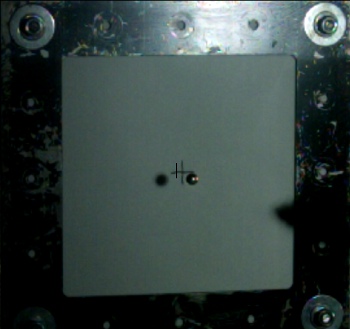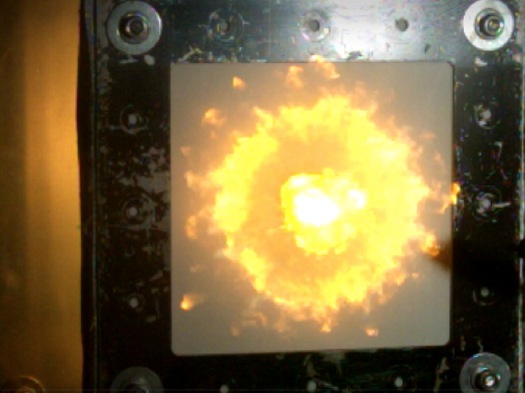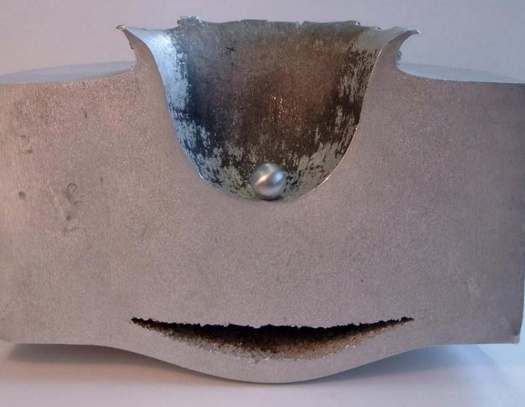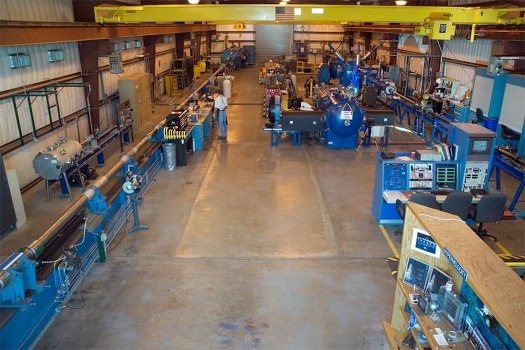 |
| January 24, 2017 | Volume 13 Issue 03 |
Designfax weekly eMagazine
Archives
Partners
Manufacturing Center
Product Spotlight
Modern Applications News
Metalworking Ideas For
Today's Job Shops
Tooling and Production
Strategies for large
metalworking plants
Space Vehicles:
NASA asks: Destruction junction -- What's your function?

This graphic sequence shows the growing quantity of tracked space junk and operating spacecraft orbiting Earth over time. [Credits: NASA]
By Melanie Whiting, NASA Johnson Space Center
Traveling at 4.26 miles per second, a tiny aluminum sphere representing a piece of orbital debris, or "space junk," can be seen crashing into a spacecraft protective shield. This test and others like it were conducted to verify that this protective micrometeoroid and orbital debris shield is able to stop sufficiently large impacts. The impact generates what appears to be fire, but the assessment was conducted in a space-like vacuum, so there is no air or fuel. The brilliant, yellow flash is due to the momentary increase in material temperatures and associated glow.

Shield projectile just before impact. [Credits: NASA]
Why is NASA's Johnson Space Center throwing everything, with the exception of the kitchen sink, at protective shields with the express purpose of impacting them? Well, space junk poses a serious risk to all spacecraft traveling near Earth. The International Space Station, located in low-Earth orbit, shares its small bit of space with approximately 2,700 tons of space junk.
The problem only increases at higher altitudes, with an additional 3,600 tons of space junk in geostationary orbit. Large enough to be tracked, there are more than 22,000 pieces of debris traveling around Earth right now. Even smaller debris, of which there is about 100,000,000 fragments larger than 0.04 in., can create significant damage to a spacecraft due to their incredible speeds. The sequence of graphics a the top of this story shows the growing quantity of tracked space junk and operating spacecraft orbiting Earth over time.

Shield 40 microseconds after impact. [Credits: NASA]
The average impact of space junk on the space station is about 6 miles per sec, but can reach speeds of up to 10 miles per sec. In addition to space junk, the orbiting laboratory is impacted continuously by micrometeoroids traveling an average of 14 miles per sec. This material can even reach speeds of up to 45 miles per sec -- a sobering prospect.
Impacts from space junk and micrometeoroids pose a risk to the International Space Station, as well as other space vehicles. Shield testing has helped produce and verify the performance of numerous protective shields on space station and other spacecraft. The testing conducted by the Johnson's Hypervelocity Impact Technology (HVIT) team is essential to protecting both the spacecraft and crew. HVIT is located in Houston and coordinates hypervelocity testing performed primarily at the White Sands Test Facility in Las Cruces, NM. Testing will continue due to manufacturing and installation requirements.

Comparison of size of projectile to size of impact. [Credits: NASA]
Even small particle impacts can cause significant damage, so current tests that began late in October 2016 can help verify new shield designs and improve the associated technology. For example, earlier testing and analysis demonstrated that multi-layered shields perform better than single-layer shields of the same areal mass. This latest series of investigations was conducted on multi-layered shields, but the materials were arranged in a configuration not previously tried before. The tested shield (or a similar design) will be built, launched, and installed on one of station's Passive Mating Adapters (PMAs) early this year. The PMA acts as one of the docking ports that allow visiting vehicles to dock to the space station. The shield will protect an area at the forward-base area of the adaptor, which recent risk analyses has shown to have higher-than-acceptable risk.

This evaluation was conducted with the .50-caliber gun, which can be seen on the far right. [Credits: NASA]
There is an entire science devoted to accessing the potential risk to spacecraft by micrometeoroids and orbital debris. Developing and testing spacecraft shield designs to reduce risk will be an ongoing process as the quantity of orbital debris around Earth increases.
This team of shield testers was founded more than 35 years ago. Since its inception, the group has analyzed well over 10,000 impact experiments. These tests, which include computer simulation, have contributed to shield ballistic limit equations -- or, the velocity needed for a particular projectile to penetrate a particular piece of material.
The International Space Station isn't the only beneficiary of this research. As we begin to explore deeper into the solar system, having high-impact shields for longer, more daunting trips will be at the top of the list of NASA's must-haves. Small teams, like Johnson's HVIT group, will help us punch through the barriers on the way to Mars.
Published January 2017
Fun-fact question: According to NASA, how many pieces of space debris, on average, fall to earth each week?
Did you guess ... 7? Well, you're right. The average is one per day.
Rate this article
View our terms of use and privacy policy
